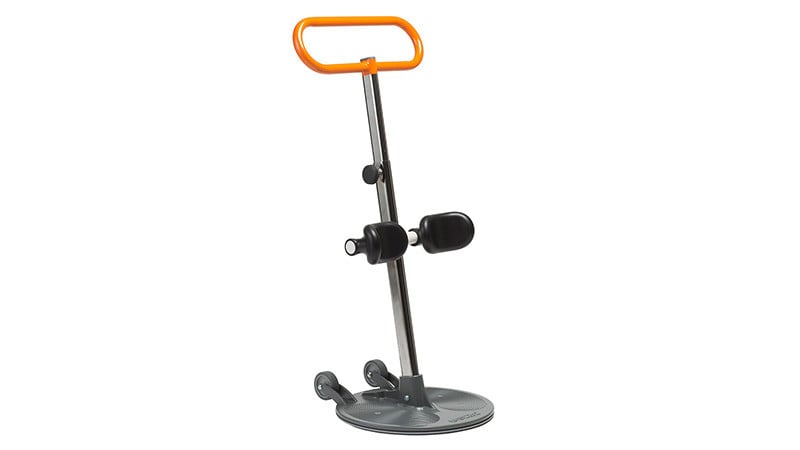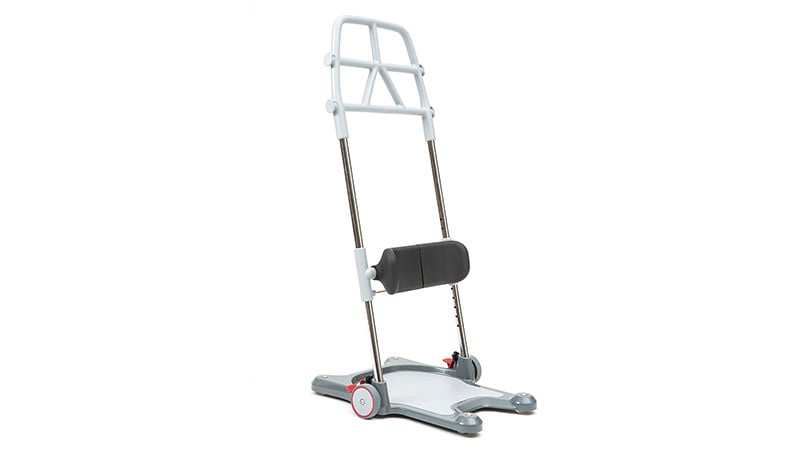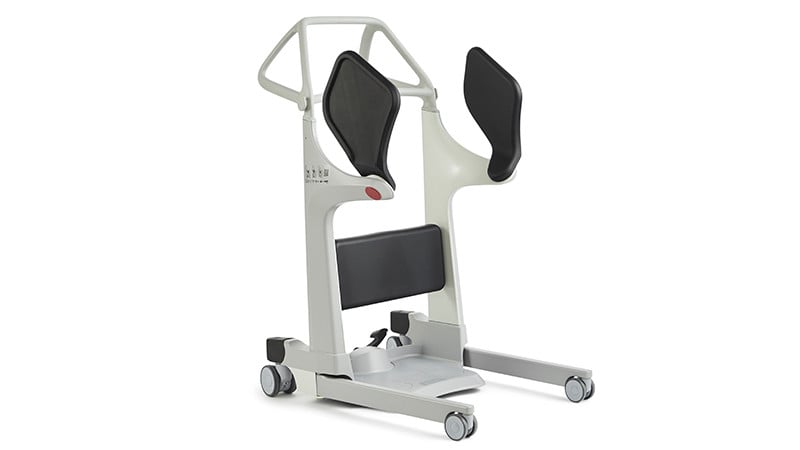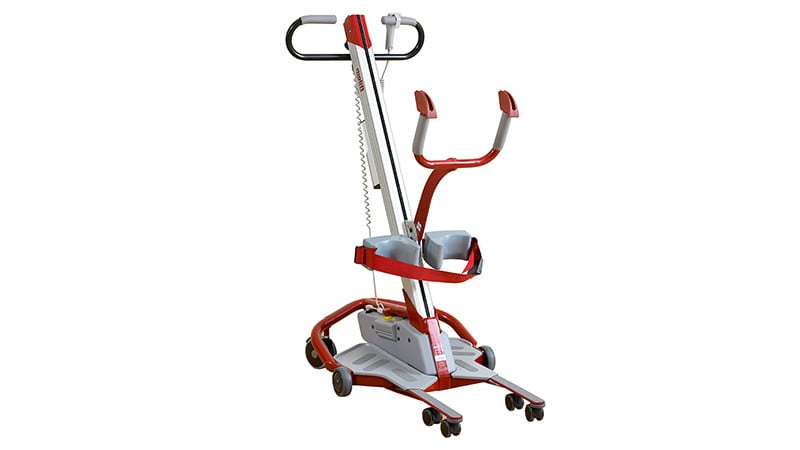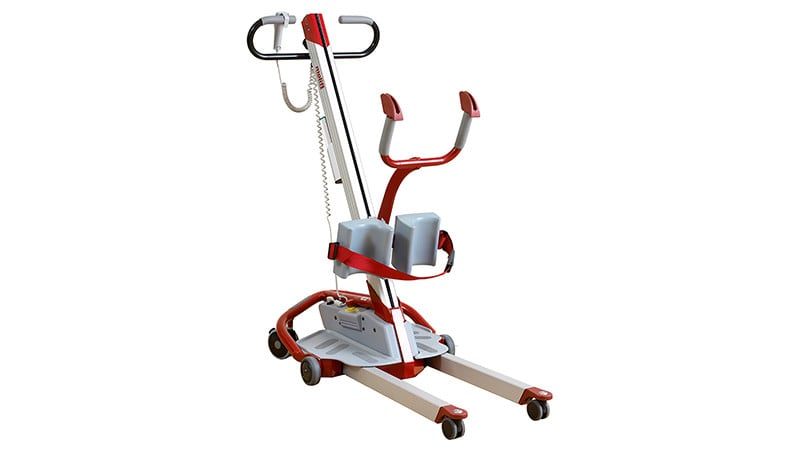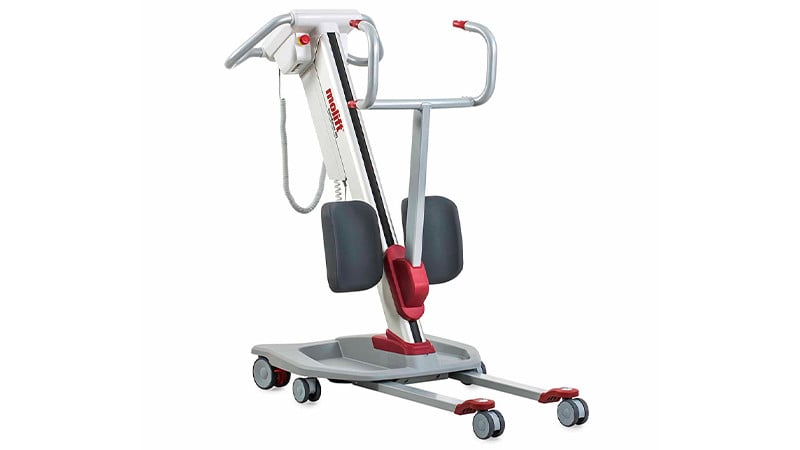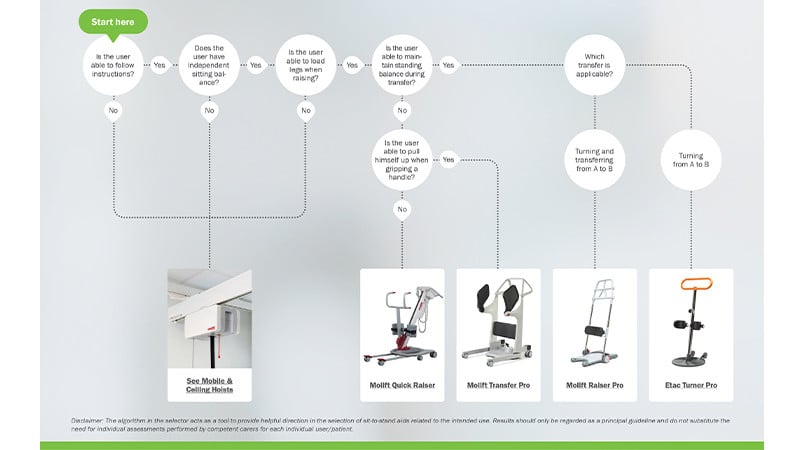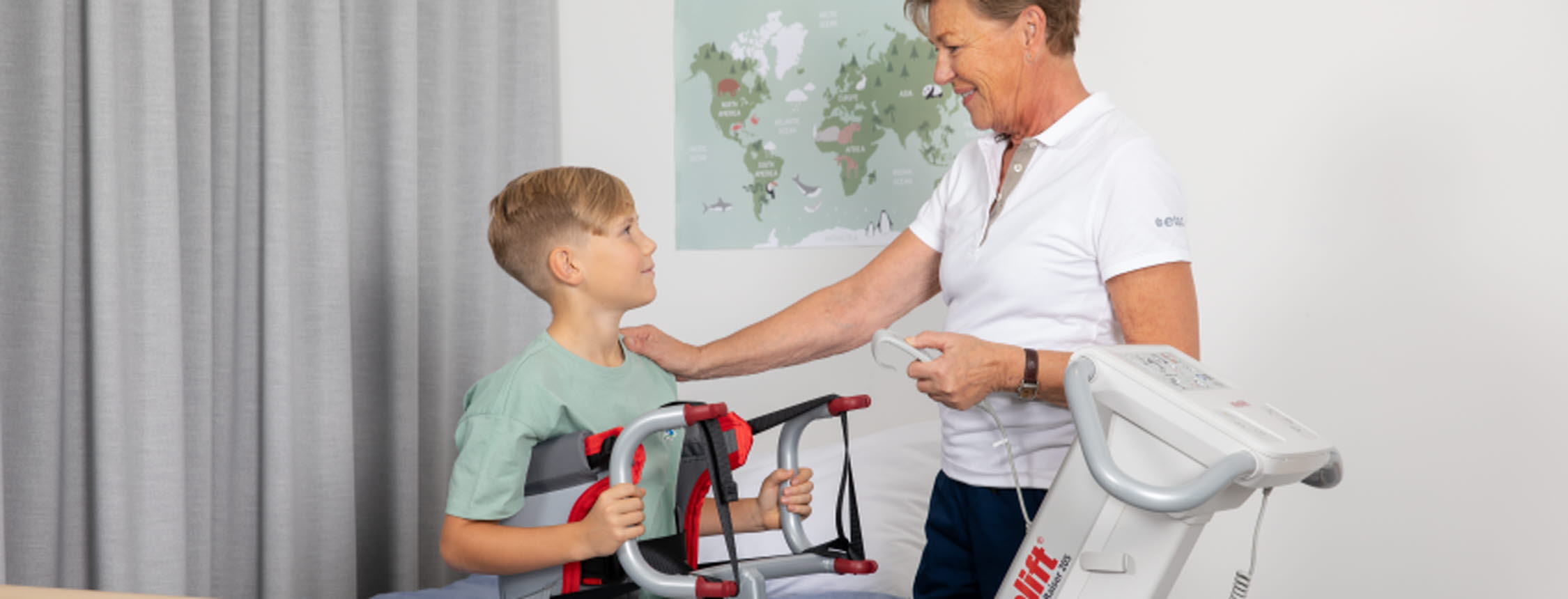Sit-to-stand devices are for users lacking the ability to stand up and transfer
themselves to another sitting position, e.g. persons suffering from pain,
reduced joint range of motion, stiffness, and muscle weakness (Edlich, 2003).
The transfer is part of the rehabilitation
In healthcare, community facilities and home care, patient handling transfers can be classified as “traditional” or “therapeutic.” Traditional transfers have a practical goal, e.g., transferring a user from bed to a wheelchair, and therapeutic transfers have more targeted goals such as facilitating and maintaining user function and independence.
Why not take advantage of traditional transfers to maintain the physical ability of the user?
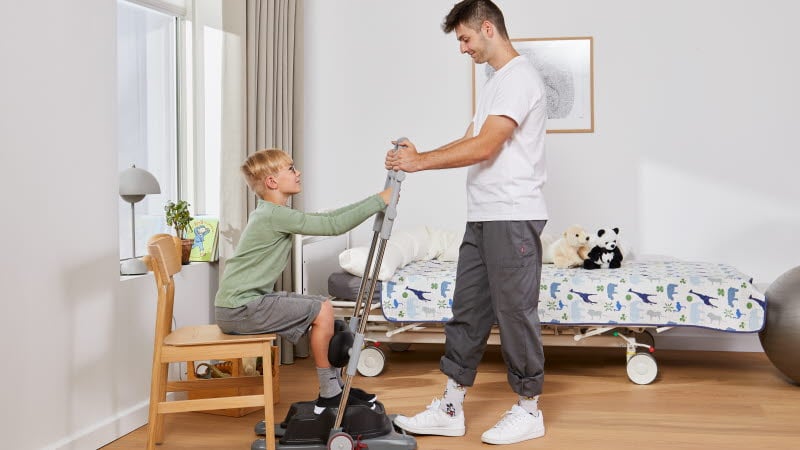
Maintaining physical ability
A study by Arias-Fernández (2018) concludes that rehabilitation and early mobilisation have a significant, positive effect on functional capacity and muscle strength, an improvement in walking distance and better perception of the health-related quality of life.
A sit-to-stand transfer is an obvious opportunity for the user to keep his ability going, and the device supports a person-centred approach, which improves dignity, and makes the person feel they are part of their care (Harrison, 2023).
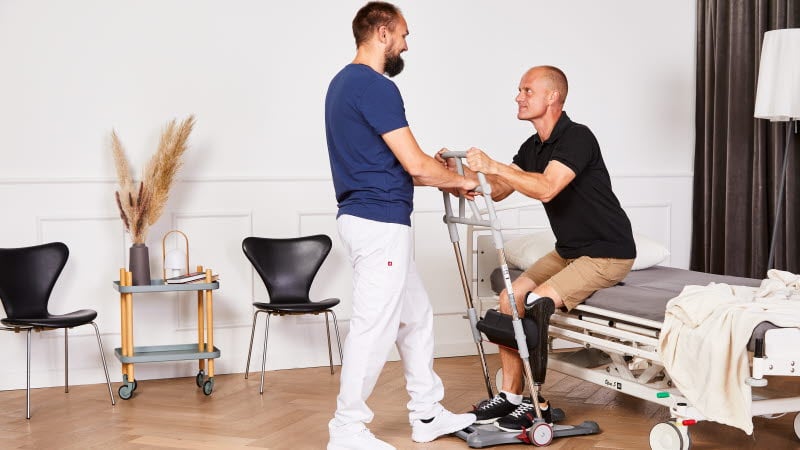
Reducing work-related injuries
Patient handling tasks present a great risk for carers to sustain work-related MSDs because carers are exposed to high mechanical loads on the spinal tissues, but when we succeed with improving the user’s muscle strength, we may reduce the strain on the carer – both now and in the long run.
Strain will be less on the carer during the sit-to-stand transfer because the user gets themself up from the chair. And by prolonging this functional capacity we postpone the day when the user needs to lie down in bed to get dressed or needs a seated sling to be hoisted. Both tasks commonly increase the strain on the carer, since the user is more passive.
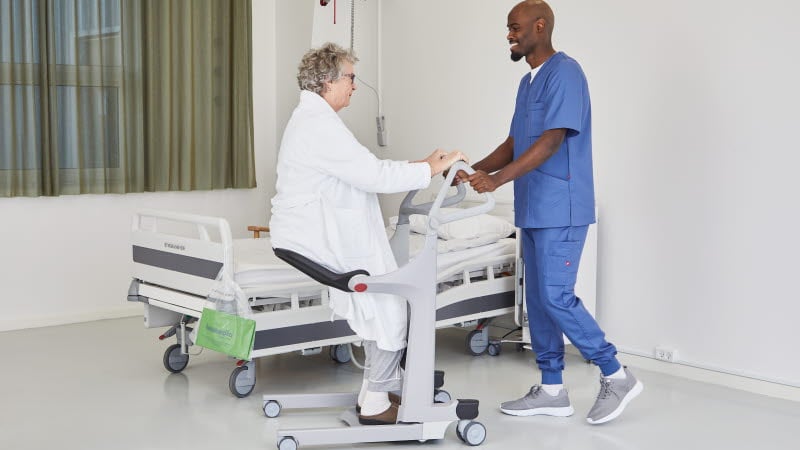
Best practice
It is recommended, that caregivers should use a sit-to-stand device when helping a patient from one sitting position to another whenever possible. This halves the load in the lower back area compared to manual handling (Riccoboni, 2021).
Several studies endorse the use of modern patient handling technology as part of a comprehensive safe patient handling program to provide less load on the carers, and sit-to-stand devices have shown to be the preferred device for rehabilitation and maintenance of the user (Tang, 2019).
Other than that, sit-to-stand devices present two interesting characteristics: they are among the less expensive and cumbersome assistive devices (Riccoboni, 2021).
Our sit-to-stand solutions
Etac offers sit-to-stand aids for various needs and care settings to enable safe, comfortable and dignified transfers. All our sit-to-stand devices are designed to facilitate good ergonomics for the user and caregiver.
Etac Turner Pro, Molift Raiser Pro and Molift Transfer Pro are non-powered devices. Molift Quick Raiser 1, 2 and 205 are electrical sit-to-stand solutions. They all have the same user requirement; the user should be able to follow instructions, grip and pull up their weight, maintain good core stability and load at least one leg.
A way to test the core stability and weight load capacity is to test if the user can sit on the edge of the bed and stand with minimal assistance (Powell-Cope, 2018).
Sit-to-stand aid selector
What to consider when choosing a sit-to-stand device
Utilize this algorithm alongside the user manual for the relevant sit-to-stand to determine the appropriate choice for the user. It is important that the sit-to-stand device has been tested with the individual user and for the intended transfer situation.
Disclaimer
The algorithm in the selector acts as a tool to provide helpful direction in the selection of sit-to-stand devices related to the intended use. Results should only be regarded as a principal guideline and do not substitute the need for individual assessments performed by competent carers for each individual user/patient.
